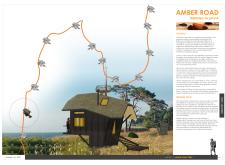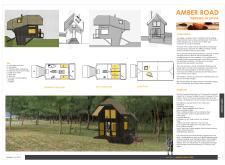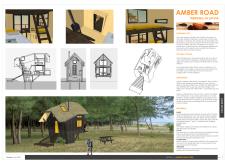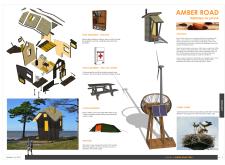5 key facts about this project
This project embodies the principles of contemporary architecture, emphasizing a balance between form and function. The design represents a response to the specific cultural and environmental attributes of the site, showcasing a deep respect for local context and community values. It functions not only as a structure but as a landmark that fosters engagement and connectivity among its inhabitants and visitors alike.
In examining the important elements that define the project, one notes the attention to spatial organization, which promotes an intuitive flow between spaces. The layout encourages interaction while also allowing for private retreats, effectively catering to diverse user needs. Open areas are thoughtfully interspersed with segmented spaces that provide both communal gathering points and quieter zones. This careful consideration of user movement enhances the overall functionality of the architectural design, making it both versatile and inviting.
Materiality plays a critical role in the project's character. A blend of materials such as concrete, glass, wood, and steel has been employed to create a harmonious relationship between the building and its environment. Concrete serves as the foundational element, providing strength and durability. In contrast, glass enhances transparency and allows natural light to penetrate deep into the interior, creating a bright and welcoming atmosphere. The incorporation of wood adds warmth and texture, grounding the design within its natural surroundings, while steel provides structural support that complements the modern aesthetic.
One of the unique design approaches taken in this project is the integration of natural elements into the architectural framework. This could be observed through the thoughtful placement of greenery, which not only beautifies the building but also enhances its ecological performance. Green roofs, vertical gardens, or landscaped terraces are likely some of the features that contribute to the project’s sustainability efforts. Such components not only improve air quality but also create a sense of tranquility amid urbanity, fostering a connection between the occupants and nature.
The architectural design further showcases innovative techniques aimed at energy efficiency and environmental stewardship. Passive design strategies may be utilized, such as optimized orientation for sunlight exposure, the use of thermal mass, and natural ventilation. These methodologies collaborate to reduce reliance on mechanical systems, demonstrating a commitment to minimizing the ecological footprint of the project.
Another noteworthy aspect of the architectural design is the emphasis on community engagement. The project is designed to serve as a social hub, encouraging interaction among visitors through thoughtfully designed communal spaces. This aspect highlights the role of architecture as a facilitator of social integration, making the building not just a physical structure but a vital part of the community fabric.
The careful consideration of context, functionality, and sustainability positions this project as a standout example of contemporary architecture. It reflects modern architectural ideas that address the needs of the present while considering the implications for the future. A review of the architectural plans, sections, and designs will unveil additional layers of thought and intention that underpin this project, providing insights that further enrich understanding of its conceptual framework and their execution. Exploring these detailed elements will offer a comprehensive view of how architecture can respond to both human and environmental needs, encouraging a deeper appreciation for the craft and its impact on our daily lives.


























